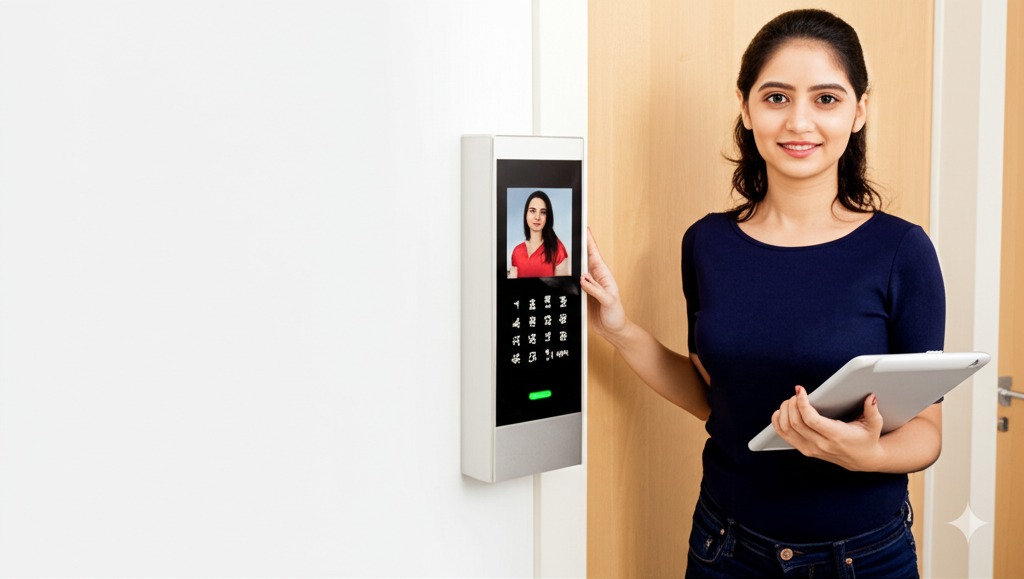In today’s world, security is a top priority for residential housing societies. With the increasing need for secure access control, many housing societies in India are turning to biometric technologies, such as face recognition and voice recognition, to secure their buildings. In this article, we will discuss how face and voice recognition biometrics can be used by residential housing societies to control access to the buildings.
Face Recognition: Face recognition is a biometric technology that uses artificial intelligence and machine learning algorithms to identify individuals based on their unique facial features. This technology is commonly used for access control, identity verification, and surveillance purposes. In residential housing societies, face recognition can be used to control access to the buildings by requiring residents to present their faces at the entrance. The technology captures an image of the resident’s face and compares it to a database of stored images to determine the person’s identity. If the person’s face matches one of the stored images, the access control system will grant access to the building.
One of the benefits of using face recognition for access control in residential housing societies is that it provides a fast and convenient way for residents to enter the building. Residents do not need to carry keys, cards, or other forms of identification, as their faces serve as their identification. Additionally, face recognition systems can be integrated with other security systems, such as cameras and alarm systems, to provide a complete security solution for the housing society.
Voice Recognition: Voice recognition is a biometric technology that uses voice recognition technology to identify individuals based on their unique voice patterns. This technology is commonly used for authentication and security purposes. In residential housing societies, voice recognition can be used to control access to the buildings by requiring residents to speak a specific phrase at the entrance. The technology captures the resident’s voice and compares it to a database of stored voice prints to determine the person’s identity. If the person’s voice matches one of the stored voice prints, the access control system will grant access to the building.
One of the benefits of using voice recognition for access control in residential housing societies is that it provides an extra layer of security. Voice recognition systems can detect fraud and spoofing attempts, as they require a live person to speak the specific phrase. Additionally, voice recognition systems can also be integrated with other security systems, such as cameras and alarm systems, to provide a complete security solution for the housing society.
In conclusion, face and voice recognition biometrics are two of the most commonly used biometric technologies for access control in residential housing societies. These technologies provide a fast, convenient, and secure way for residents to enter the building. They can also be integrated with other security systems to provide a complete security solution for the housing society. By using biometrics, housing societies can enhance their security measures and provide their residents with peace of mind.




